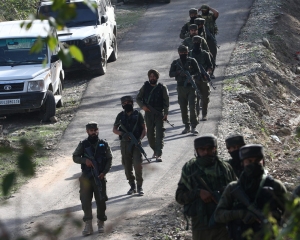In a welcome departure from the past, the decibel levels came down markedly on the streets of Mumbai on the last day of the Ganesh festivities on Sunday, as more than 250 leading Ganpati mandals took out processions to various waterfronts across the metropolis to immerse the idols of the elephant-head God without DJs and Dolby Music systems which would have in the normal course contributed to massive noise pollution.
In a direct fallout of a total Bombay High Court’s order banning the on the use of DJs and Dolby sound systems during the Ganesh and Navratri festivals, the revellers had to make do traditional and less noisy dhols and tashas, as they added colour to the Ganesh immersion proceedings in the city and suburbs.
The Ganpati immersion proceedings proved to be a relatively quiet affair, with 250-odd major Ganesh Mandals deciding to obey the order passed on Friday by the Bombay High Court which had put a total ban on the use of DJs and Dolby sound systems for Ganeshutsav and Navratri festivals.
While rejecting a plea for interim relief filed by Professional Audio and Lighting Association (PALA), a HC bench of Justices Shantanu Kemkar and Sarang Kotwal had said: “The police authorities have banned the use of DJ and Dolby sound systems. All these systems have to be operated strictly in adherence with Noise Pollution Rules 2000.”
“We are not willing to accept the argument that ambient noise levels in many cities have exceeded permissible limits and, therefore, DJ systems should be permitted, which cause only a marginal increase in the decibel level over the prescribed norms. When laws are in place, they must be strictly followed,” the judges had said in their interim order. However, the high court had allowed the use of traditional musical instruments like the dhol and tasha.
Amid rhythmic dhol beats and chants of “Ganpati bappa morya, pudhchya varshi lavkar ya” (Hail Lord Ganesh, do come back early next year), several major Sarvajanik Ganesh idols – including Mumbai’s prestigious Lalbaugcha Raja Ganapati idoli and “Mumbai Cha Raja” –made their way through their from Lalbaug in south central Mumbai quietly wended their way through the designated to the Girgaum Chowpatty where the immersion proceedings were expected to go on well past midnight.
Like every year, there was a massive turnout of people at various immersion sites across the city, including Girgaum Chowpatty, Dadar Chowpatty, Juhu Chowpatty, Marve beach, Madh Island, Powai lake, Madh Island, Manori Beach, Gorai beach, Mahim beach, Aarey lake, the Mithi River, its branches and various artificial lakes. In all, there were more than 110-odd immersion spots across the city and its suburbs.
Like every year, as many as 12,000 huge idols installed by Sarvajanik Mandals, while at least 2,20,000 domestic idols were immersed at 69 natural and 41 artificial immersion spots on various significant days like the second day, fifth day, seventh and the last days during this year.
Under the watchful eyes of the 45,000-odd policemen, 12 companies of SRPF, one company of Rapid Action Force (RAF) and also personnel from the “Force One”, Quick Response Team (QRT) and anti-bomb squads of the Mumbai police, the Ganesh immersion proceedings were continuing till in the night.
Through drones and CCTV cameras deployed at various places along the Ganesh immersion procession routes in the city, the police monitored the situation from various control rooms. Several major roads in the city had been fully closed for traffic to facilitate the passage of Ganesh proceedings.
In an effort to ensure against any untoward incidents during the Ganesh immersion proceedings, The Indian Coast Guard (ICG) had deployed shallow water response team on board a hovercraft, an Air- Cushion Vehicle, off the Mumbai coast.
On their part, the Mumbai police had set up as many 58 control rooms set up at major waterfronts, including Girgaum and Dadar chowpatties to keep a close watch of the proceedings. The Brihanmumbai Municipal Corporation (BMC) had kept in readiness at least 600 life guards and 81 motor boats to ensure against any mishap during the immersion proceedings. The BMC had also installed 1,999 flood lights and 1,301 search lights at various immersion venues.
The Railway Protection Force (RPF) and Government Railway Police (GRP) had also made elaborate arrangements along various suburban stations on the Central Railway (CR) and Western Railway (WR). As many as 8,000 BMC employees were present at various natural and artificial immersion venues.
Maharashtra chief minister Devendra Fadnavis Fadnavis carried en eco-friendly Ganpati idol installed at his official residence “Varsha” at Malbar Hills and immersed it in an artificial lake.
Like every year, the Kapoor family members, including Rishi Kapoor, son Ranbir Kapoor and uncles Randhir and Rajiv, joined the immersion proceedings of Ganesh idol installed at the iconic RK Studios, where they broke a coconut each before the procession began.
This year’s proceedings may perhaps the last of such a kind of Ganesh festivities witnessed at the R K Studio, especially in the light of an announcement made on behalf of the famous family by Rishi Kapoor that his family members had collectively decided to sell to the sprawling studio, built by his late legendary father Raj Kapoor, as they felt it was economically not viable to rebuild the place after a massive fire that broke there on September 16 last year.























